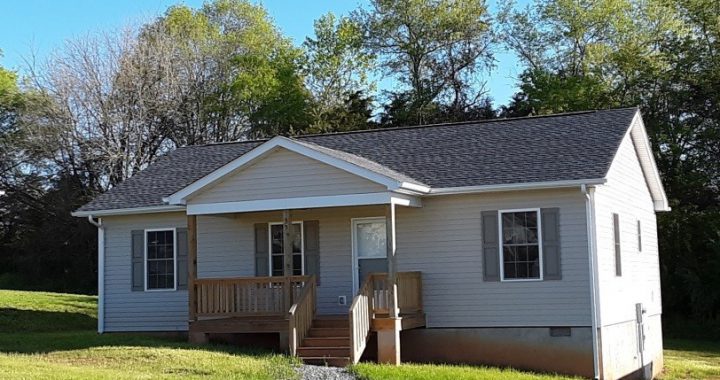News
Survey Sheds Light on Transportation Priorities
Infrastructure Completed for Phase II of Greenhouse Village
Since 2012, Rockbridge County has partnered with Rockbridge Area Habitat for Humanity in the development of affordable housing in the Greenhouse Village neighborhood, a mixed-income community of single-family homes located near Lexington. The project has been completed in multiple phases, and in September 2017 Rockbridge County was awarded a Community Development Block Grant (CDBG) for $476,693 in funds for Phase II. The CDBG grant was matched with $1,978,100 in additional funds from other sources. The CDBG funding was used for the development of water, sewer, and street infrastructure which will allow for the construction of 12 new single-family homes bringing the total to 20 new homes built by Habitat in Greenhouse Village. The construction of the infrastructure was completed in fall 2019. Construction on the homes will be completed by Habitat in January 2022.
CSPDC provided grant administration services, and the CDBG program is administered by the Virginia Department of Housing and Community Development.
USDA Funds Agricultural Enterprise Center Feasibility Study
Chesapeake Bay Watershed Implementation Planning Continues in 2020
All Hazard Mitigation Plan Completed
Announcements
Please stay tuned for events and more information from the CSPDC.
Archives
- February 2025
- January 2025
- December 2024
- October 2024
- September 2024
- August 2024
- July 2024
- June 2024
- May 2024
- April 2024
- March 2024
- February 2024
- January 2024
- November 2023
- October 2023
- September 2023
- August 2023
- July 2023
- June 2023
- May 2023
- April 2023
- March 2023
- February 2023
- January 2023
- December 2022
- October 2022
- September 2022
- August 2022
- July 2022
- June 2022
- May 2022
- April 2022
- March 2022
- February 2022
- January 2022
- December 2021
- November 2021
- October 2021
- August 2021
- July 2021
- June 2021
- May 2021
- April 2021
- March 2021
- February 2021
- January 2021
- December 2020
- November 2020
- October 2020
- September 2020
- July 2020
- June 2020
- May 2020
- April 2020
- March 2020
- February 2020
- January 2020
- November 2019
- October 2019
- September 2019
- June 2019
- May 2019
- April 2019
- March 2019
- February 2019
- January 2019
- December 2018
- October 2018
- September 2018
- August 2018
- July 2018
- June 2018
- May 2018
- April 2018
- March 2018
- February 2018
- January 2018
- December 2017
- November 2017
- October 2017
- September 2017
- August 2017
- July 2017
- June 2017
- May 2017
- April 2017
- March 2017
- February 2017
- January 2017
- December 2016
- September 2016



